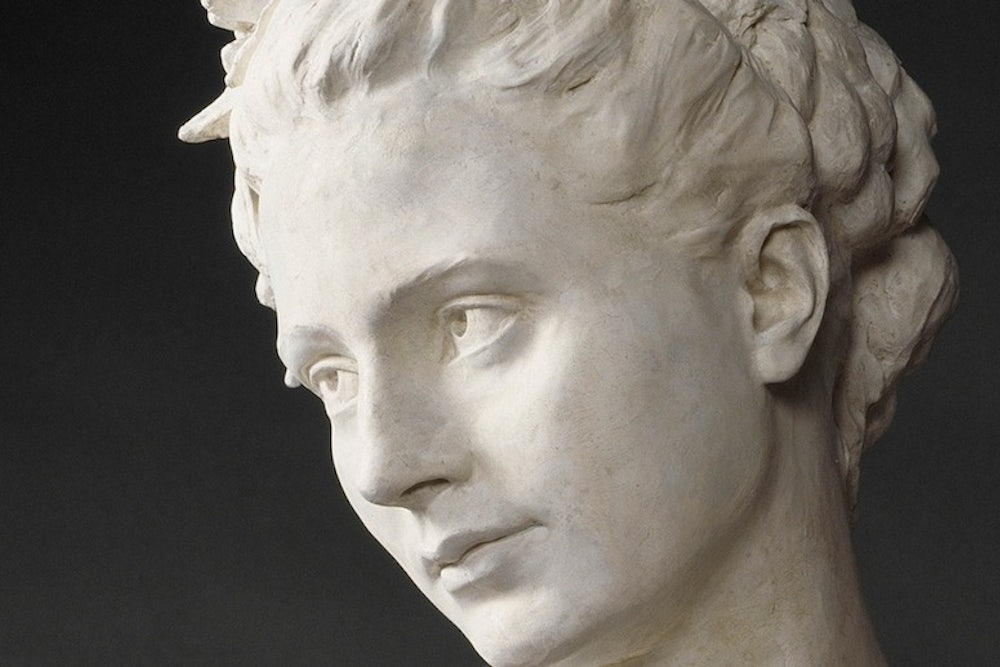The nineteenth-century French sculptor Jean-Baptiste Carpeaux is gloriously uncategorizable. Although he received major public commissions and did a famous portrait of the Prince Imperial, son of Napoleon III, he remained something of a romantic outlier and something of a rococo aesthete. He was an insider who never lost his dissident DNA. So if you are the sort of person who recoils from typecasting and branding, you won’t want to miss “The Passions of Jean-Baptiste Carpeaux,” a knockout exhibition at the Metropolitan Museum of Art. The curators—James David Draper of the Metropolitan and Edouard Papet of the Musée d’Orsay in Paris, where the show travels next summer—treasure this artist who can’t be fit into any cubbyhole. They make their position perfectly clear in the introduction to the catalogue, when they declare that “the art historical world has long cherished branding artists with names of stylistic movements, but Carpeaux ultimately resists classification.” Born in 1827 in Valenciennes in the north of France, he was a Balzacian hero who grappled with all the perils and treacheries of the Parisian art world.

From his study of Dante’s desperate, demonic Ugolino, through the sleekly ebullient allegory of The Dance for Garnier’s Paris Opera House, to portraits of aristocrats, courtesans, and artist friends, Carpeaux (who was still in his forties when he died in 1875) exercises a restless, searching sensibility. He can be accused of being an academic or even a conventional artist, for there is a sense in which he invents nothing new. This is why museumgoers and critics who are obsessed with pigeonholing artists as academic or avant-garde will have trouble knowing how to see Carpeaux. The beguiling naturalism of his portraits unabashedly echoes the eighteenth-century master Houdon; his Ugolino is one of a number of works that pay homage to Michelangelo’s muscular intensity; the terracotta studies bring Bernini to mind; and some of the drawings and highly experimental paintings suggest comparisons with Delacroix’s bristling graphic attack. Carpeaux’s structures may not be original—he has discovered nothing new in the visual arts—and yet there is something about his sensibility that keeps us excited, attentive, even on edge. The man was a troubled soul—explosive in his personal life, by turns charming and off-putting, and in his later years he struggled with painful bladder cancer—and you feel all that turmoil in the quickening surfaces and surprising shapes of his sculptures. The originality that he brings to his art isn’t so much conceptual as it is sensuous, a feeling for forms that are by turns silken, roiled, and coruscated, whether made of roughhewn terracotta, smoothest marble, or agitated bronze.

Carpeaux reminds us that many of the experiences that matter most—certainly many of the artistic experiences that matter most—can’t be fit into column A or column B, as if they were answers filled out on a multiple choice test. This man who went through the rigors of the Ecole des Beaux-Arts (the mother of all art academies), competed for all the prestigious prizes, and after many frustrations ultimately won the Prix de Rome, loved the art of the past with a passion so overheated that it freed him from conventional academic thinking. For Carpeaux, tradition wasn’t rules and regulations, but the supernatural heroism of Michelangelo and Raphael, which astonished him when he finally reached Rome in 1856. It may be Carpeaux’s yearning for an unattainable heroic power that gives his work its captivating energy and anxiety. His mythic protagonists aren’t quite as dramatically dark as Delacroix’s. His countesses aren’t quite as sublimely sensuous as Ingres’s. What Carpeaux gives us instead is the ordeal of the nineteenth-century imagination—the imagination that reaches for an ultimate greatness that remains just beyond his grasp. You can’t quite explain the particular quality of this work, which is by turns romantic and realist and classic and sometimes simultaneously all of the above. You feel that unresolvable power in every gallery of this remarkable retrospective. The exhibition has a terrific title—“The Passions of Jean-Baptiste Carpeaux”—but it could as easily have been called “The Ambiguities of Jean-Baptiste Carpeaux.”
